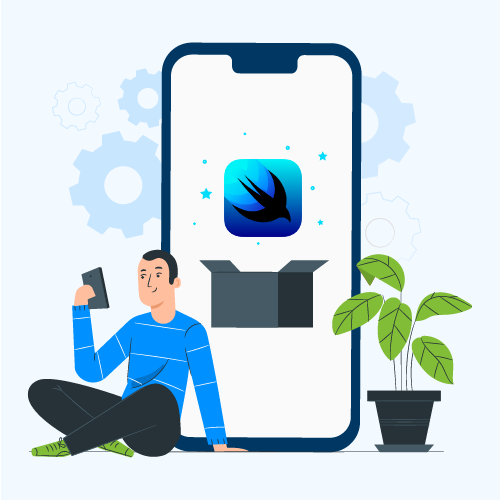Introducing SwiftUI – Apple’s New Interactive UI Framework
Apple, at WWDC Developer Conference 2019, launched various innovative technologies, features, tools, and frameworks, but the one that received maximum applause from developers is Swift UI.
Swift UI
Swift UI is an interactive and revolutionary framework that will enable the Apple developers to develop to design application for both iOS, MacOS, and tvOs. The framework has come up as the most awaited addition of Swift programming language – providing developers with the tools and APIs to bring their iPhone app solution on Mac, and other Apple platforms while saving time and resources required. The framework is also coming up with an option to relish unique features of the platform such as speed associated with Mouse and Trackpad, distinctive features like Touch Bar, and more – something that will bring it in direct competition to Google’s Flutter UI framework and Facebook’s React Native in the cross-platform industry.
[Read Here: React Native vs Flutter 2019: The State of Cross-Platform Industry]
Now, while the prime agenda behind launching the Swift UI development framework is to bring Swift programming language in the market of Cross-platforms, it is also equipped with a myriad of other features, making the experienced iOS application developers paying a keen interest in employing SwiftUI in their development process.
Some of such features with which SwiftUI is entering the Apple development market are:-
Native Characteristics
Though introduced to write codes that work efficiently on all the platforms, the SwiftUI is absolutely native. It can access all the native functionalities and technologies of any platform and thus, deliver interacting user interface experience and that too at a lightning speed.
Besides, SwiftUI development framework is also integrated with APIs such as ARKit and automatic language optimization that will streamline the experience of both the iOS developers and users.
Declarative Syntax
SwiftUI comes with a declarative syntax that makes it simple to understand and write codes and decide what your user interface (UI) should do. For example, you can mention that you want a list of items with text fields along with the details like font, alignment, color, etc.
This will bring a drastic difference in terms of time consumption and maintenance efforts, especially when introducing complex concepts like animation. When talking more specifically, this UI development will provide developers with ease to select from a collection of ready-made effects using a few lines of code and manage the development process, handle everything associated creating a smooth deployment and dealing with interruptions, and ultimately, come up with a more ‘alive’ application.
Drag and Drop
Another exciting feature introduced in SwiftUI framework is the drag and drop feature. With this feature, app developers will be able to pick any element and bring on the canvas, customize its properties, and rearrange its controls. And the best part is that most of these visual editor options will be available in the code editors also, implying you will be able to monitor new modifiers for every control even when you are coding on your own. This, in the long run, will give more powers to Swift to supersede Objective-C and compete with programming languages like Python.
Previews
SwiftUI framework also offers developers the opportunity to create more than one preview of their design and display on multiple devices and in varied orientations. This will eventually help them with experimenting with their design in terms of font color and layout in different types at the same time.
Dynamic Replacement
As announced at Apple WWDC Event 2019, the Swift compiler and runtime will be fully embedded with Xcode 11. With this, the iOS app development companies will get an opportunity to build and run their applications in real-time – something possible in the case of Swift Playground also. In simpler words, the design canvas will not showcase the picture of an approximate user interface, but the live application itself to the developers. And another thing to consider is that Xcode will avail the opportunity to swap edited code in the live application directly using the ‘dynamic replacement’ factor.
iOS13 Compatibility
Above all, SwiftUI is coming up with default support for Dark Mode, Dynamic Type, Localization, and other accessibility options which make it the best UI framework to write your code on.
With all these features, SwiftUI framework is expected to bring major transformation in the way developers build iOS mobile apps and enhance their approach to enter the Cross-platform without losing their hold on the native functionality. And thus, giving developers more reasons to fall for Swift programming language.

strategies your digital product..



